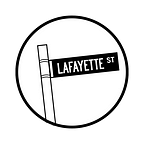How Moncler genius was born
If you are a fashion enthusiast chances are you either own or desire a Moncler jacket. Since its launch of fame in the 80s, Moncler became the luxury winterwear go to, appealing and worn by everyone. You may catch grandmas walking down the street with the jackets they bought in the 70s or 80s and around the corner see high schoolers wearing the brand’s puffer vests. The thing is that everyone wants Moncler and everyone wants to be caught wearing Moncler.
The story of Moncler begins in the city of Monestier-de-Clermont, situated at the foot of the French Alps. Even in its earliest years, Moncler considered aesthetics just as much as it did performance. Throughout the ’70s, the brand researched fabrics and finishes that could replicate snow’s reflective properties. The result — the “shiny lacquered effect” — is now commonplace in its clothes. By the end of the ’90s, Moncler was struggling to expand, caught off-guard between the rise of luxury conglomerates and dedicated outdoor sportswear companies. On the verge of bankruptcy then creative director Remo Ruffini bought Moncler becoming chief executive and head of the board. With a quick turnaround, Ruffini managed to take the company public and redefine the brand for an entirely new generation of consumers. Ruffini’s strategy as creative director was to focus on the brand’s most iconic item: the down jacket. Ruffini’s first order of business was doubling down on quality, making sure Moncler’s luxury price point adequately reflected its product. Under Ruffini, no detail overlooked, from smooth-running zippers to plush shiny nylons manufactured specifically for the company. Discussing his business strategy with W magazine, Ruffini explained how while “other brands have a target, perhaps a certain age group, people earning a certain amount of money…[Moncler needs] to make something for skateboarding kids, for travelers, for the elegant lady who dines out.” In order to appeal to everyone, Moncler’s focus was three-fold: function, fashion, and diversity of product.
But let’s focus a moment on Moncler Genius. As a part of Moncler’s strategy to become the number one winterwear brand and to market to a fashion market, in 2018 they introduced Moncler Genius. A press release describes the Genius operation as “a hub of exceptional minds operating in unison while simultaneously cultivating their singularity.” What they basically did was invite world-renowned designers like Pierpaolo Piccioli, Craig Green, Hiroshi Fujiwara, and Francesco Ragazzi among others to collaborate with the inhouse design team and reinvent the staple Moncler jacket to their liking. This new means to collaborate brings a fresh twist on the collaborations we have been seeing lately. It looks like brands are collaborating nowadays by simply adding marketing symbols and monograms to already existing products to raise the hype on items that already exist and gaining profit for the new uncultured ‘hypebeast’ consumer. Moncler somehow does it for the art, to try and marry their product to different design philosophies of designers that come from different backgrounds that create amazing products that get reflected also profit-wise. One of the latest partners of Moncler genius was Rick Owens, famous for being very selective on his collaborations, in fact, he stated “I’ve always been very skeptical about the collab situation. Under the worst circumstances, it’s an obvious marketing gimmick. But Moncler has been doing really creative, extravagant kind of reckless things”. His collaboration was accompanied by a tour bus designed by himself and Moncler, but more on that later.
Moncler Genius was also born out of trying to break the traditional one season, one collection cycle in favor of a series of drop sight. Somehow similar to the drops Supreme does every Thursday. This may a scheme used to try to avoid seasons, a topic that has been running around the fashion industry for a while now (Also read: Fashion is finally slowing down) and might also be related to the fact that Moncler, being a winterwear brand, is looking for techniques to still be able to sell limited quantity novelty products even in summer, somehow increasing inventory turnover in a season in which people are not expecting to buy a ski jacket.
Moncler Genius might have been a novelty strategy Moncler implemented in order to keep up with the trends, to secure their positions as leaders in the market segment they operate, or maybe to create a new segment line. But instead what I think they did was to highlight that collaborations are at an all-time low and that Moncler Genius is the collaboration model that brands should follow.
